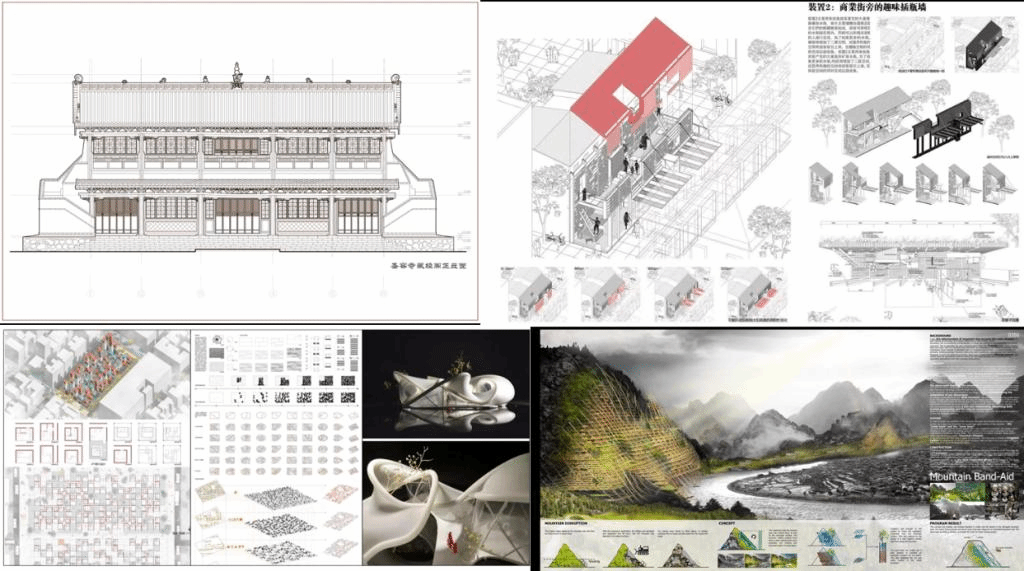Objectives
Our undergraduate degree program aims to cultivate high standards in knowledge and skills within the next generations of architectural designers and practitioners. This involves providing students with an international perspective grounded on national culture, while placing a strong focus on scientific and humanistic literacy. Our courses are intended to provide a balance of comprehensive design and practical skills with a broad theoretical foundation, while seeking to encourage a spirit of innovation and risk-taking.
In managing this program, we take into account the needs of our students, as well as the requirements of both the National Accreditation for Professional Education in Architecture (NAPEA) and the Certification System for Professional Architects (licensed/chartered architects).
Admissions and Faculty Composition
The overall quality of enrollments in architecture has always been a top priority for our university, since it is among the top four architecture schools and colleges across the country: in 2019 the first-class admission cut-off point for science & technology disciplines was 551 points, while the minimum admission level for the General Architecture Program of Tianjin University was 664 points. Over the past five years, on average, 100–110 students were enrolled in the Department of Architecture on an annual basis (of which approximately 10–20 are international students).
Since 2019, the School of Architecture has combined three individual majors (Architecture, Urban & Rural Planning and Landscape Architecture) into a single program titled “General Architecture”, for which a total of 151 students were enrolled. After one year of studying in a broad number of classes, they must choose to specialize on one of the three majors in the first semester of the second year.
The Department of Architecture currently has 495 students (enrolled during the period of 2014–2018) and 89 full-time faculty members, thus reaching a faculty-to-student ratio of 1:6. Among our faculty members, there are 29 professors, 33 associate professors, and 27 lecturers.
In addition, the Department of Architecture has been highly proactive in establishing design studios and laboratories led by reputed domestic and international architectural practitioners; these allow for students to engage directly with established figures in the world of architecture, receive direct knowledge from them through theoretical courses, and explore new possibilities during the execution of design projects.
Overview of Teaching Programs and Courses
Tianjin University’s School of Architecture was initially accredited in 1992 by NAPEA (valid for the longest possible period of seven years), being one of the first four institutions in China to receive this accreditation.
The minimum required residency period for students enrolled in the Bachelor of Architecture degree (B. Arch. degree) is five full academic years. The B. Arch. Degree is awarded upon satisfactory completion of the required credits, a final design project and a related thesis. As a member of the Canberra Accord (Recognition of Substantial Equivalency between Accreditation/Validation Systems in Architectural Education), China's architectural education accreditation system is designed to meet all relevant international standards.

Overview of Training Program
Latest Advances in Engineering Education (“Neo-Engineering”)
In 2018, the Department of Architecture launched a new educational platform, “Intelligent Built Environment and Architecture,” which serves as one of the four so-called “Neo-engineering” platforms in Tianjin University. “Neo-engineering” is a term coined by the Ministry of Education in 2017, intended to represent the emerging fields of artificial intelligence, intelligent building, robotics, cloud computing, and many others that are likely to revolutionize or significantly affect the traditional engineering majors. In response to the MOE’s pledge to introduce several reforms in engineering education, a number of leading domestic institutions such as Tianjin University have therefore sought to develop educational platforms and contents based on the “Neo-engineering” vision, which is focused on interdisciplinary research and innovation.
In this regard, the School of Architecture has offered a BIM curriculum since 2007, and was one of the earliest schools in China to introduce BIM courses for undergraduates. In 2012, it completed a workshop titled “Kinetic Architecture” which was the first one in mainland China to deal with embedded computation technology within buildings. Furthermore, we have improved our Undergraduate Training Programs in Architecture by including new sections on “intelligent design and construction,” “spatial sensing and interaction,” “big data and spatial humanities,” etc.
So far, we have completed a number of workshops based on the ideas of “Neo-Engineering”, such as “Construction of Robotic Arms” (first grade), “Parametric Design” (third grade), “Topology and Interactive Design” (fourth grade), “Sensible City” (graduation design project theme) and “Fabricated Design under the Guidance of Intelligent Construction” (for postgraduate students). These initiatives are interrelated with a number of pre-existing design courses like “Architectural Graphics,” “Design Software and Programming,” and “Construction Theory”.

Student works
